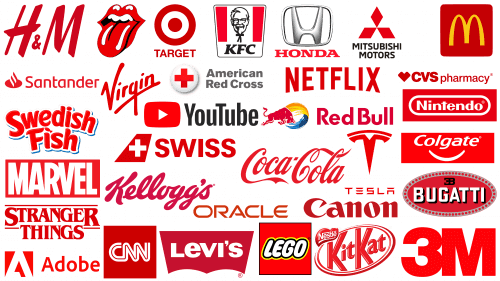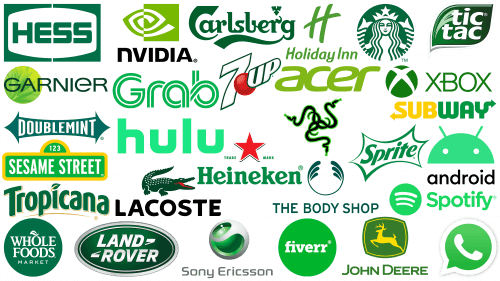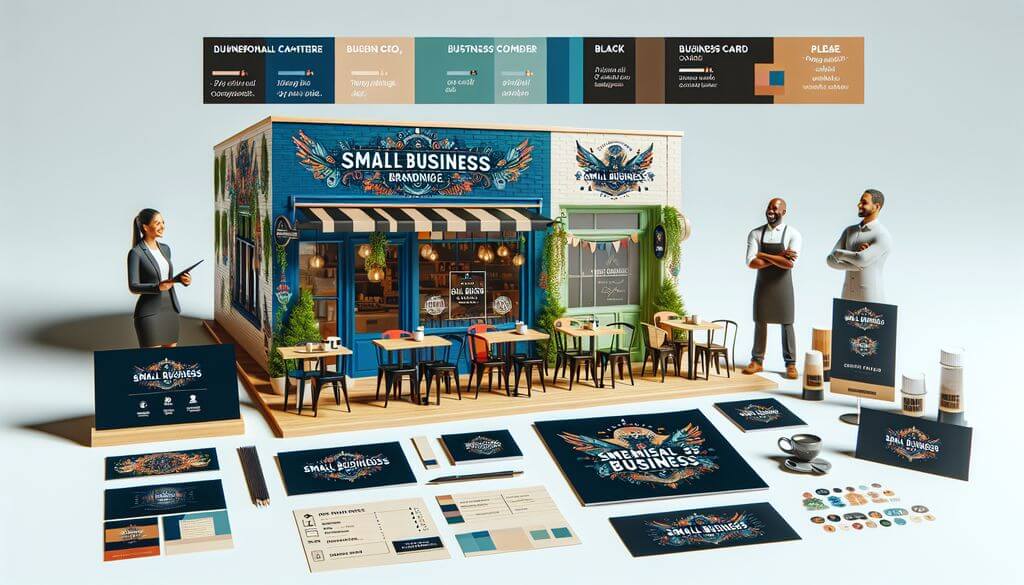Table of Contents
Branding is a crucial aspect for small businesses as it helps them stand out in a competitive market, build trust with customers, and create a strong brand identity. In this article, we will explore the essentials of small business branding and design to help you establish a successful brand presence.
Key Takeaways
1. Branding is essential for small businesses to differentiate themselves in a competitive market.
2. Consistency in branding elements helps in building trust and recognition.
3. Storytelling plays a significant role in effective branding strategies.
4. Engaging with your audience is key to creating a strong brand connection.
5. Measuring branding success through key performance indicators and customer feedback is crucial.
The Importance of Branding for Small Businesses

Why Branding is Essential
Branding is the essence of your organization, encapsulating your mission, vision, values, and unique identity. It’s the foundation upon which your business communicates with the world. Branding goes beyond just a logo or a visual motif. It’s a comprehensive strategy that ensures every aspect of your business is aligned with the image you want to project.
Small business branding is a holistic experience that reflects the core of your business and resonates with your community. It's about creating a consistent and versatile identity that connects with your audience on multiple levels.
- Cohesiveness: Ensuring all branding elements work together harmoniously.
- Consistency: Maintaining a uniform brand message across all platforms.
- Versatility: Adapting your brand to various contexts while retaining its essence.
A strong brand stands out in a crowded market, conveying why you’re the better choice and fostering a connection with your target audience. It’s about thriving in a competitive environment by understanding and catering to your ideal customer profile (ICP). By aligning your branding with the needs and preferences of your ICP, you can create a powerful emotional connection that sets you apart from the competition.
Benefits of Strong Branding
A robust branding strategy can significantly boost profits and elevate a small business’s prospects. By clearly communicating its unique values and ethics, a business not only distinguishes itself from competitors but also fosters a compelling reason for customers to choose its offerings. This clear communication can be further enhanced through effective sales enablement materials, which equip your team to convey your brand’s value proposition consistently
- Builds brand recognition: A well-crafted brand becomes easily recognizable, aiding in customer recall and loyalty.
- Enhances reputation: A good reputation, bolstered by strong branding, can be a lifeline during challenging times.
- Facilitates growth: As a business’s brand gains traction, it can pave the way for expansion into a larger enterprise.
Strong branding contributes to the overall valuation of your business, becoming a valuable asset when considering exit strategies or sales. It helps in attracting buyers and achieving a favorable sale price.
Moreover, a memorable brand enhances advertising effectiveness. The more consumers see and recognize your brand, the more likely they are to trust and engage with it, leading to repeat business and lasting relationships. For instance, a brand promise like “Tastes good. Does good” can resonate deeply with consumers whose values align with the brand, creating a powerful connection.
Ignite Your Brand
Crafting Unique & Unforgettable Identities
🚀 Transform Your Brand into a market force with bespoke branding and design.
✨ From Strategy to Implementation – We’ve got you covered.
👥 Collaborate with Experts who understand your vision.
Building Trust Through Branding
Trust is the cornerstone of any successful small business, and branding is pivotal in building customer trust. A powerful brand identity can be a game-changer in terms of recognition and fostering a sense of reliability and confidence among your audience.
However, effective branding goes beyond the visual elements. It encapsulates your business’s values, mission, and the promise you make to your customers. When these aspects are aligned and consistently presented, they form a cohesive narrative that resonates with your community. This narrative is crucial for small businesses aiming to establish a lasting relationship with their customers.
Branding is not a static element but a dynamic interaction that evolves with your business and its community. It's about creating a holistic experience that reflects the core of who you are and connects on a deeper level.
To ensure that your branding is building trust effectively, consider the following points:
- Ensure your brand actions match your brand message.
- Be transparent about your business practices.
- Consistently deliver on your brand's promise.
- Engage with your audience to build a community around your brand.
Elements of a Strong Brand Identity

Logo Design Essentials
A logo is a point of recognition for clients and an important foundation for the branding of your company. Understanding the brand is the first step in creating a logo that truly represents your business. It should mirror the company’s values, resonate with the target audience, and position itself appropriately in the market.
When designing a logo, simplicity is key. A straightforward design ensures that your logo is easily recognizable and memorable. Moreover, a logo should be timeless, steering clear of fleeting trends to remain relevant for years to come. Versatility is also crucial; your logo must be adaptable across different mediums, from business cards to billboards, and maintain its integrity in both color and black and white.
The essence of a great logo lies in its ability to communicate a brand's identity effectively and succinctly.
Color choice is another significant aspect of logo design. The right colors can convey your brand’s message and evoke the desired emotional response. Understanding color psychology is essential in selecting hues that align with your brand’s identity. Below is a list of essential tips for designing a logo:
- Deep understanding of the brand
- Simplicity in design
- Timelessness
- Versatility in application
- Strategic color choice
Color Psychology in Branding
The strategic use of color in branding can evoke specific emotions and associations in your audience. Colors express key values and personality traits, making them a powerful tool in conveying your brand’s message. For instance, the color brown is often associated with feelings of comfort and security, which is why it’s frequently used in marketing for natural or food-related items.
When selecting colors for your brand, it’s essential to understand the psychological impact they may have. Here’s a simple list of common color associations in Western cultures:
- Red: Excitement, passion, danger

- Blue: Trust, calm, professionalism

- Green: Growth, health, environmental consciousness

- Yellow: Optimism, energy, caution

- Purple: Luxury, creativity, mystery

The colors in your palette should work together to express your brand while giving it a unique look. It's not just about a single color but the combination that tells the story of your brand.
Color is so integral to branding that some companies have even trademarked their signature hues, such as UPS brown, Tiffany blue, and Fiskars orange. These colors have become synonymous with the brands themselves, showcasing the power of color psychology in branding.
Differentiation and Distinctiveness: Key Pillars of Branding Success
Delving deeper into the essence of what makes a brand truly stand out, we encounter two pivotal concepts: differentiation and distinctiveness. These are the key pillars of branding success. Differentiation is about strategically setting your brand apart from competitors, carving out a unique market position that underscores your brand’s special value. It involves crafting a narrative that not only highlights your brand’s unique qualities but also the distinct advantages it offers to consumers.
On the flip side, distinctiveness focuses on forging a brand identity that is instantly recognizable to your audience. This is achieved through the strategic use of brand distinctive assets — elements like logos, colors, shapes, and more — that signal your brand’s presence in a marketplace. These visual and experiential markers are what make your brand memorable, ensuring it captures and retains attention in the consumer’s mind.
Both differentiation and distinctiveness are foundational to a brand’s marketing effectiveness. While differentiation guides how a brand uniquely positions itself within its competitive landscape, distinctiveness ensures that the brand’s visual and sensory expressions are uniquely its own. Together, they form a formidable duo that can significantly enhance a brand’s visibility and connection with its audience.
To further explore these crucial branding principles, let’s turn to the insights of marketing guru Mark Ritson. He offers valuable perspectives on how these strategies can be effectively applied to rejuvenate and solidify your brand’s market presence. The following clip provides a closer look at leveraging differentiation and distinctiveness to enrich your brand’s identity, illustrated through the case study of how Snickers turned around its declining market share. Watch this insightful video to deepen your understanding of these key pillars of branding success.
Consistency in Branding Elements
Achieving brand consistency for small businesses aiming to establish a strong brand identity is a must. It’s about ensuring that all visual and communicative elements align across every platform and touchpoint. This uniformity is not just about aesthetics, but about fostering a reliable and predictable experience for customers, which in turn builds trust and recognition.
- Visual Elements: From logos and color palettes to typography, every aspect should be consistent. For instance, a style guide can be a valuable tool to maintain visual coherence.
- Brand Voice: Whether it’s friendly or professional, your brand voice should remain steady across all channels.
- Online and Offline: The experience should be seamless, whether customers interact with your brand in a physical store or online.
- Frequent Engagement: Regular interaction with customers reinforces brand presence and aids in maintaining consistency.
Consistency in branding is not just a one-time effort. It's an ongoing process that requires attention and adaptation as your business and market evolve. However, it's important to balance consistency with flexibility to ensure your brand remains relevant.
Remember that a consistent brand is a recognizable brand. Companies like Coca-Cola and Apple are prime examples of consistency done right, leading to a strong market presence and customer loyalty. Small businesses should take note and strive for the same level of coherence in their branding efforts.
Common Branding Mistakes to Avoid

Inconsistency Across Platforms
Maintaining a consistent brand image across various platforms is very important. Inconsistency can lead to confusion among customers and dilute the brand’s impact. For example, if your website conveys a modern, sleek design but your social media profiles are outdated, customers may question the reliability of your brand.
To avoid this, small businesses should develop a comprehensive brand style guide. This guide serves as a blueprint for all branding efforts, ensuring that every aspect of the brand is aligned, from the logo and color scheme to the tone of voice used in communications.
By streamlining user experience and maintaining brand consistency, businesses like Coca-Cola and Starbucks have set industry standards. It’s not about changing your brand with every market trend, but rather evolving it thoughtfully to stay relevant while keeping core elements stable.
Ignoring Brand Voice
Ignoring the brand voice can be a critical misstep for small businesses. The voice of a brand is a powerful tool that conveys its values, personality, and uniqueness. When a brand’s communication lacks a consistent voice, it risks confusing its audience and diluting its message.
A brand's voice should resonate with its target audience and be reflected in every piece of content it produces, from marketing materials to social media posts.
For instance, a high-end brand may opt for a professional and well-mannered language, while a laid-back brand might use a conversational tone. Documenting the specifics of your brand’s voice in a style guide is essential to maintain alignment across the company. Here are some areas where the brand voice should be consistently applied:
- Marketing materials
- Social media interactions
- Customer service communications
- Product descriptions
- Advertising campaigns
Failing to adhere to a defined brand voice can lead to a lack of brand differentiation and hinder the ability to build credibility with customers. It’s not just about the words you choose, but also the tone and manner in which you communicate with your audience.
Lack of Brand Differentiation
In the realm of small business, standing out from the competition is crucial. Without a clear unique selling proposition (USP), businesses risk blending into the sea of competitors, making it harder for potential customers to understand why they should choose your brand over another. For instance, Everlane’s commitment to “radical transparency” and Purple Mattress’s focus on unique materials are examples of differentiation that resonate with consumers.
A lack of brand differentiation not only confuses the market but also dilutes the potential impact of your marketing efforts. It's essential to identify and communicate what makes your brand unique.
To ensure your brand stands apart, consider the following steps:
- Identify your brand's core values and mission.
- Highlight your brand's unique features or benefits.
- Create and implement a brand style guide for consistency.
- Regularly review your market position and adjust your branding strategy accordingly.
Remember, a well-differentiated brand simplifies decision-making for customers and fosters brand loyalty, as seen with companies like Nike and Patagonia, whose clear brand identities have cultivated a dedicated customer base.
Strategies for Effective Branding

Storytelling in Branding
Brand storytelling transcends mere narrative. It’s the art of weaving your brand’s values, mission, and experiences into a cohesive and engaging tale that resonates with your audience. It’s about creating a memorable brand experience that fosters an emotional connection with your customers.
Effective storytelling in branding involves several key elements:
- Authenticity: Your story should be genuine and reflect the true nature of your brand.
- Relevance: The story must connect with your audience's values and experiences.
- Consistency: Maintain a consistent narrative across all branding materials and platforms.
- Emotion: Aim to evoke emotions that align with your brand's message.
By mastering the art of storytelling, you can transform your brand into a living entity that customers relate to and remember.
Remember that every aspect of your branding from the logo to the tone of voice plays a role in telling your story. A strategic approach to branding will ensure that your story is not just heard, but felt and lived by your community.
Engaging with Your Audience
Engaging with your audience is much more than just broadcasting your brand’s message. It’s about creating a two-way conversation that fosters a deeper connection. Social media followers are key to growing your brand reputation. By actively listening to your audience, you can tailor your content to their interests and needs, making them feel valued and understood.
Engagement is not a one-size-fits-all approach. Each platform has its unique environment and audience expectations. It's crucial to adapt your strategy to fit these nuances to maintain authenticity and relevance.
Here are some ways to effectively engage with your audience:
- Respond promptly to comments and messages to show that you value their input.
- Encourage user-generated content (UGC) to build community and trust.
- Host live sessions or Q&As to interact in real time and add a personal touch.
- Share behind-the-scenes (BTC) content to humanize your brand and showcase your brand values in action.
Engagement is an ongoing process that evolves as your audience does. Stay attuned to their changing preferences and be willing to adapt your strategies accordingly.
Enhance Your Branding Strategy with Creative Insights
To further explore innovative ways to boost your brand’s visibility, watch the video “11 Strategies To Help You Creatively Grow Brand Awareness” by Neil Patel below. It provides valuable insights and actionable tips to complement the branding essentials discussed, helping you to connect more effectively with your target audience and enhance your small business’s presence in a competitive market.
Utilizing Social Media for Branding
Social media is an indispensable tool for branding. It offers a platform to showcase your brand’s personality, engage with your audience, and build a community around your products or services. To effectively utilize social media for branding, consider the following steps:
- Optimize your bio to reflect your brand’s mission and values.
- Develop your brand voice and ensure it’s consistent across all posts.
- Engage with user-generated content to foster a sense of community.
- Create and join online conversations relevant to your industry to increase visibility.
By following these strategies, you can create a strong social media presence that resonates with your target audience and amplifies your brand’s message. You should post regularly, but also create content that aligns with your brand’s identity and values. Engage with your audience by responding to comments and messages promptly, and use analytics tools to measure the impact of your efforts.
Small Business Branding Refresh Tactics

Updating Your Logo
When considering a logo update, it’s crucial to remember your logo is the face of your brand. It should align with your brand’s position and embody your brand values, evoking the desired emotional response from your audience. A logo redesign can be a powerful refresh tactic, but it must be approached with caution to avoid alienating your existing customer base.
A logo update should ensure that the design remains functional across various platforms, including packaging, signage, digital media, and more. High resolution and appropriate spacing are essential for readability and brand recognition.
Here are some key considerations when updating your logo:
- Ensure the new design is not already trademarked or similar to another company's logo.
- Assess the scalability of the logo for different applications.
- Consider the potential risks and benefits of re-branding.
- Utilize professional design services or platforms for a polished result.
Remember the Gap rebranding fiasco of 2010? It serves as a cautionary tale of how even well-established brands can stumble. Any changes to your logo should be strategic and enhance your brand’s connection with its audience.
Revisiting Brand Messaging
Revisiting your brand messaging is a critical step in maintaining a relevant and enduring brand identity. As markets evolve and consumer preferences shift, it’s essential to ensure that your messaging still resonates with your target audience. This process involves evaluating and potentially refining your brand’s core message, value proposition, and the language used in your communications.
To begin, assess your current brand messaging by asking key questions:
- Does it align with your brand's values and mission?
- Is it clear and easily understood by your target audience?
- How does it differentiate your brand from competitors?
After this assessment, you might find that a refresh is in order. This could mean a subtle tweak to the language or a more significant overhaul to better capture the essence of your brand. Any changes made should aim to strengthen customer loyalty and attract new markets without alienating your existing base.
When making changes to an established brand identity, be sure any modifications have benefits that significantly outweigh the risks of altering your brand's perception.
Finally, leverage tools like Google Analytics and social media platforms to monitor how people interact with your new messaging. This data will guide you in making informed adjustments and help you avoid common rebranding pitfalls.
Enhancing Brand Visuals
Enhancing your brand visuals will help create a lasting impression on your audience. To achieve this, consider developing a comprehensive library of visual elements that offer both cohesiveness and versatility. This ensures that your branding remains consistent across all touchpoints, from your website to social media to print materials.
- Primary Elements: Your logo suite, color palette, and font system are the cornerstones of your visual identity.
- Secondary Elements: Imagery, templates, and other assets should complement your primary elements and be easily recognizable as part of your brand.
By ensuring all visual elements adhere to your brand guidelines, you create an identifiable and consistent ‘look and feel’ that resonates with your audience and enhances brand recognition.
Your goal is to create a visual brand that not only looks good but also communicates effectively and connects with your audience on an emotional level. Are your visuals telling the story you want them to tell?
Measuring Small Business Branding Success

Key Performance Indicators for Branding
Identifying the right KPIs is crucial for measuring the success of your branding efforts. These indicators should reflect both the qualitative and quantitative aspects of your brand’s impact. For instance, brand awareness KPIs, customer satisfaction, and brand equity are essential metrics that can provide valuable insights into how your brand is perceived and its position in the market.
- Brand Awareness: How well do potential customers recognize your brand?
- Customer Satisfaction: Are your customers happy with their experience?
- Brand Equity: What is the value of your brand in the eyes of your customers?
It's important to balance creativity with practicality when selecting KPIs. They should be aligned with your business goals and capable of guiding your future branding strategies.
Additionally, consider monitoring sales, market share, and customer feedback, as these can be direct indicators of brand performance. For a more nuanced understanding, track metrics related to your advertising campaigns and social media engagement. The Net Promoter Score (NPS) can also be a powerful indicator of customer loyalty and brand resonance.
Customer Feedback and Brand Perception
Understanding how customers perceive your brand is pivotal to your business’s success. Regularly soliciting customer feedback is a key strategy in managing brand perception. This feedback can come from various sources, such as social media comments, customer surveys, and direct interactions. By analyzing this feedback, businesses can identify areas of strength and opportunities for improvement.
To effectively measure brand perception, consider conducting brand perception studies. These studies can reveal how your brand stands against competitors and highlight potential areas for refinement.
Here are some steps to analyze and refine your brand based on customer feedback:
- Review social media comments to gauge immediate public reaction.
- Engage with customers by responding to comments and marking positive feedback.
- Use tools like Google Analytics to understand website visitor behavior and campaign effectiveness.
- Survey a wide range of individuals to gather diverse opinions on your brand’s message and emotional impact.
Keep in mind the end goal. Which is to ensure that your brand consistently delivers the impact you’re aiming for. Keep testing and refining until you achieve a brand that resonates with your audience.
Analyzing Brand Reach and Engagement
Understanding the extent of your brand’s reach and the level of engagement it garners is crucial for evaluating the effectiveness of your branding efforts. By defining brand awareness reach, businesses can assess their current standing in the market and identify opportunities for improvement. Tools such as customer surveys and Google Analytics provide valuable data, revealing sources of website traffic and the success of advertising campaigns.
To truly gauge the impact of your brand, it's essential to analyze both quantitative and qualitative feedback. Reviewing social media comments offers insights into how people perceive and interact with your brand. This information can guide necessary adjustments to your branding strategy.
Here are some steps to effectively analyze brand reach and engagement:
- Monitor website analytics to track visitor sources and behavior.
- Evaluate advertising campaign metrics to determine their contribution to brand performance.
- Calculate your Net Promoter Score (NPS) to measure customer advocacy.
- Engage with and review social media comments to understand public sentiment.
- Continuously test and refine your branding based on feedback and performance data.
Ready for a Brand Revolution?
Let's Chat About Your Brand's Future
☕ Schedule a Discovery Chat – Relaxed, insightful, and pressure-free.
🌟 Your Brand’s Potential is unlimited. Let’s unlock it together.
Conclusion
In conclusion, small business branding is an essential component for building a strong and successful business identity. From creating a cohesive brand identity to understanding the importance of branding elements, this article has highlighted the key strategies and tactics for revitalizing and enhancing your small business brand. By implementing these branding essentials, you can effectively communicate your brand’s values, stand out in a competitive market, and connect with your target audience. Remember, branding is not just about a logo; it’s about creating a memorable and impactful brand experience that resonates with your customers. So, take the necessary steps to strengthen your brand identity and watch your small business thrive in the ever-evolving business landscape.
Frequently Asked Questions
Yes, branding can be even more crucial for small businesses than for large corporations. Small businesses face the challenge of standing out in a crowded market and building trust with customers without the advantage of widespread recognition. A strong brand helps small businesses differentiate themselves, convey their unique value proposition, and establish a loyal customer base, which is essential for long-term success.
Discovering your small business brand voice involves understanding your company's personality, values, and the message you want to convey to your audience. Start by defining your mission statement and the qualities that set your business apart. Consider your target audience and how you want them to feel when they interact with your brand. Experiment with different tones and styles in your communications, and seek feedback to find the voice that resonates most with your customers.
Absolutely. Regardless of industry, size, or market, branding is vital for all small businesses. It's not just about having a logo or a catchy name; it's about creating a consistent and memorable experience that attracts and retains customers. Effective branding helps businesses establish credibility, communicate their value, and build emotional connections with their audience, which are key factors in driving growth and success.
Improving branding and traffic involves a combination of strategic branding efforts and targeted marketing tactics. Focus on creating a cohesive brand identity across all platforms, from your website to social media to packaging. Use content marketing, SEO, and social media engagement to increase visibility and attract visitors. Additionally, consider leveraging partnerships, influencer collaborations, and community engagement to broaden your reach and drive traffic.
The first steps in creating a brand involve defining your brand's mission, vision, and values. Identify your target audience and understand their needs and preferences. Develop a unique selling proposition (USP) that sets you apart from competitors. Then, create a visual identity (logo, color scheme, typography) and a brand voice that reflects your brand's personality and resonates with your audience.
It's wise to reevaluate your branding strategy at least once a year or whenever there are significant changes in your market, audience preferences, or business goals. Regularly assessing your brand ensures it remains relevant and aligned with your target audience's evolving needs. However, any changes should be made thoughtfully to preserve brand recognition and loyalty.
Social media can significantly impact your small business branding by providing platforms to express your brand voice, connect with your audience, and share your brand story. It's an invaluable tool for building brand awareness, engaging with customers, and showcasing your products or services. Consistent, authentic, and engaging social media presence can enhance your brand's visibility and foster a loyal community around your business.
Share :
